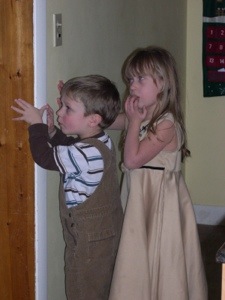Bubonic plague, concentration camps, slavery … history is often dark and full of tragedy. Knowing how and when to introduce difficult topics without creating fear can be tricky.

Living with sensitive kids has taught me a lot. Here are the highlights:
Start at the end
Kids want, or more accurately, need to know that they will be safe. When we, as teachers, focus on resolution first they are able to put the problems in perspective. For example, when teaching about the plague to a group of 7&8 year olds this past year, I started with explaining that medicine has come a long way. We then mixed up our own edible versions of some crazy sounding medieval cures including “blood” frosting and gummy spiders. It wasn’t until the end, while they were eating their treats, that I went into detail about the Black Death. By this point they had enough information to realize that the plague, though tragic, was not threat to them.
Be careful with historical fiction & biographies
I adore historical fiction. It makes unfamiliar places and times come alive for my children. Often it is a great way to introduce a topic without going into graphic detail, BUT there are some topics that require diligent proofreading. Children easily become emotionally attached to characters and seeing someone you “know” deal with the realities of war can be a bit much for sensitive kids. These stories may best be saved for when your children have matured a bit.
Focus on the familiar
War is never a simple topic to explain, and it only gets more complicated when you try to distill it to its essentials and explain it to children. The role of dogs in WW II is much more approachable to a child, than a story of the men of D-day. It introduces the topic from a positive light.
Don’t skip topics because you are afraid of them
Seeing mom intentionally dance around a subject or refuse to answer questions can create a mystique. ~”What is mom so scared of? It must be terrible.”~ Instead, approach sensitive subjects thoughtfully. Give kids time to digest information and ask questions. Most importantly, think ahead and be ready with answers, because they will ask.
Become a lover of short hero stories
Books with a happy ending are a great way to begin to explore difficult topics. TheResolution. Slaves who made it to freedom, prisoners who escaped, these are all uplifting. The key is to keep it short. Going to bed halfway though a suspenseful tale, and wondering what will happen next is a recipe for sleepless nights.
I should clarify that I am kinda’ glad my kids are sensitive. We want people in our world who
- Are aware of others feelings and needs
- Are empathetic and compassionate
- Have a clear sense of right and wrong
- React strongly to injustice
These are the future peacemakers and justice defenders of our world. We don’t want to squash that sensitivity.
At the same time, I’m not advocating sheltering them from the facts, but introducing events in a gentle manner. Finley Peter Dunne once said of journalists,
“Our job is to afflict the comfortable and comfort the afflicted.”
Teachers share this role.
We are responsible for raising knowledgable citizens, one step at a time. Even if the first step involves gummy spiders.

